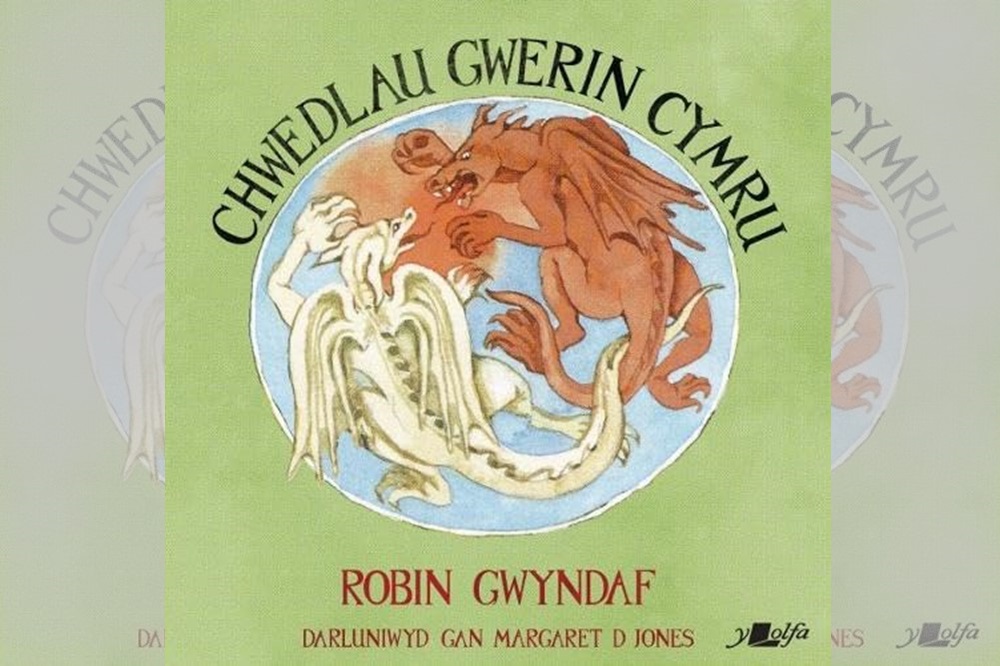Book review: Chwedlau Gwerin Cymru by Robin Gwyndaf

Ant Evans
There’s nothing like a good folk tale, is there? Any country you care to think of has its fair share of myths, legends and folk tales and this is most certainly true of Wales.
In “Chwedlau Gwerin Cymru”, first published in 1989 and republished by Y Lolfa, Robin Gwyndaf treats the reader to over sixty such tales, ranging from the more familiar (such as the drowning of Cantre’r Gwaelod) to the less well known (but more on those later).
But there’s more to this incredibly charming book than the tales themselves. Here, the reader is introduced to the tradition of folk tales in Wales, their continuation and adaptation. These tales, the author tells us, were transferred mainly orally at first.
Though they have been written down and recorded in various ways (most recently thanks to recording devices) over the years by collectors and scribes. Also discussed are the wells, lakes and stones which are important features of folk tales.
The importance of the Mabinogion over centuries as proof of a living interest in storytelling is noted also. Indeed, the first tale included tells of Branwen’s death of a broken heart, following the battle where Bendigeidfran leads warriors to Ireland to avenge the mistreatment of his sister at the hands of her husband, Matholwch.
Reading the sixty three tales included here (I must admit to having read them all in a short space of time, though this is certainly a collection which you could pick up and read a couple at a time with a cuppa, if you felt like it) there were a few features which stood out.
Context
Firstly, the historical context provided with some of the tales, which would seem to be either testament to their popularity (such as the habit of lovers between the Middle Ages and the eighteenth century to undertake a pilgrimage to Ynys Llanddwyn to seek St Dwynwen’s blessing) or even as a basis for the tales themselves (Pennard castle being buried by sand blown in from the sea, the author supposes this historical event was used a basis for the tale of the castle being buried by a sandstorm caused by scorned tylwyth teg or fairy folk).
I also couldn’t help but notice that tales from each corner of Wales were included. Although tales from the north (25) and west (17) made up the majority, the number of tales from the south (11) and east (10) still made it into double figures.
Magic
One story which stood out to me, bearing in mind this is a Welsh language collection, is the tale of Dr John Lloyd, a bone doctor whose family were well known in Radnorshire and Herefordshire for their interest in medicine and magic. Dr Lloyd was nicknamed “Silver John” thanks to the silver buttons on his coat.
As Gwyndaf notes “It is said that he was murdered by the men of Radnor who attempted to steal the buttons and other pieces of silver which he wore on his clothes, these being payment for his medical services”. There’s English language rhyme included at the end:
“Silver John is dead and gone
So they came home a-singing;
The Radnor boys pulled out his eyes
And set the bells a-ringing”
Gruesome! On balance, if John and his family were famous both sides of the border then I shouldn’t be too surprised by the fact the above rhyme is in English.
Variety
There’s plenty of variety to be had here. From the paranormal (a ghostly monk rebuilding the altar at Strata Florida, after the Dissolution of the Monasteries) to the explanation of how the people of Risca earned the nickname “The Cuckoos of Risca”.
After the tales, the author then goes on to discuss traditional customs, such as Calennig singing (which sadly seemed to be on the way out when I was growing up, I can only recall singing for older relatives on New Years Day, rather than going door to door) Hunting the Wren and the crafting of love spoons.
I couldn’t possibly finish this review without mentioning the excellent artwork by Margaret D. Jones accompanying each tale. The image on the books cover of the two fighting dragons, the white dragon representing the Saxons and the red representing the Britons really caught my eye. Of course, the tale involving the dragons is included here.
For those unable to speak Welsh, at the time of writing an English language edition is due to be published imminently. So my advice to you would have to be; if you’re interested in Welsh folk tales, history and culture, this is a must read in either language.
Chwedlau Gwerin Cymru by Robin Gwyndaf is published by Y Lolfa and is available from all good bookshops.
Support our Nation today
For the price of a cup of coffee a month you can help us create an independent, not-for-profit, national news service for the people of Wales, by the people of Wales.




